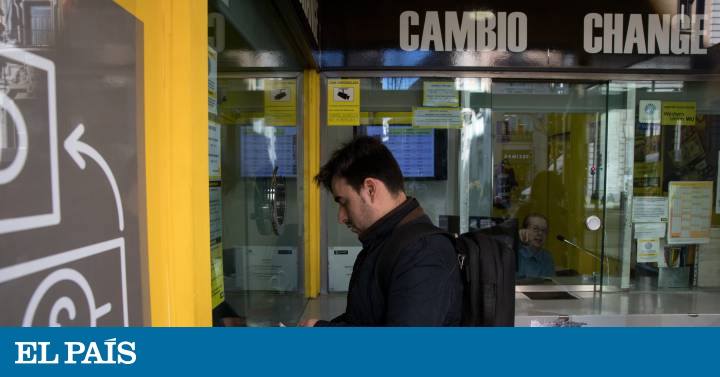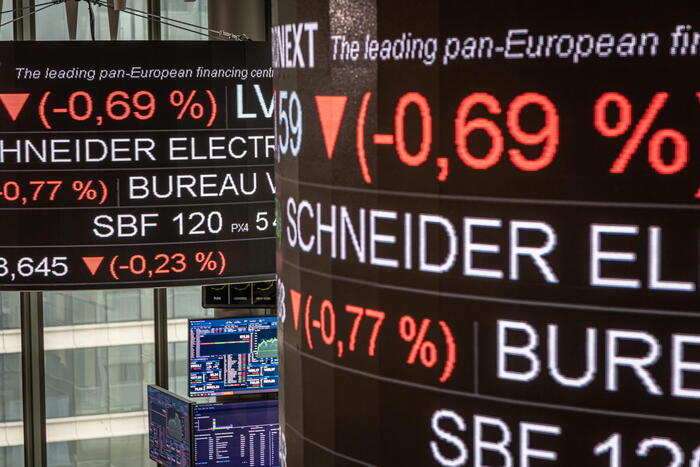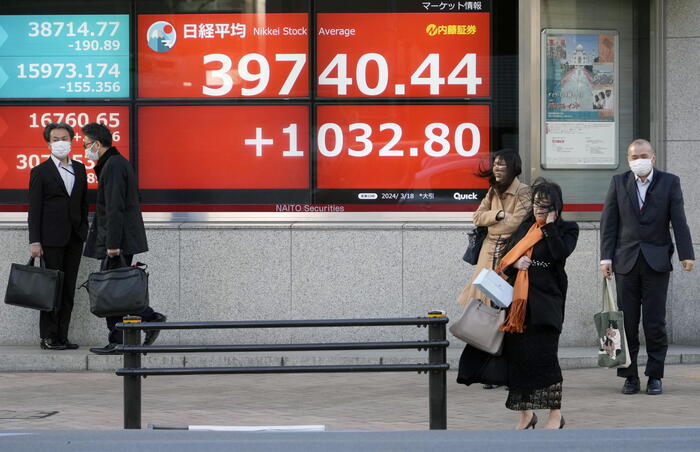The big investment banks in the world, the famous financial intermediaries, the prestigious analysts have started the year making mistakes. The eurozone currency, the euro, should be appreciated against the US dollar following the idea that the European currency has long been undervalued. . But no, in these almost two months of 2020 it has been the greenback that has given the surprise by revaluing 3.5% and dragging the euro to its levels in April 2017.
A movement that they describe as surprising. Now for one euro they give you $ 1,0804 and at the beginning of the year it was changed to $ 1,1206. Good news for those who invest in US bonds or stock and bad for those who prepare a getaway to the United States because the trip has become more expensive that 3.5%. But everything has its explanation. Here the expectation of the evolution of both economies (European and American), interest rates and forecasts, the ability to shelter both currencies and an unexpected crisis born of the Chinese coronavirus, renamed Covid-19, are mixed. And to this is added the exit of the United Kingdom from Europe with everything to decide and its commercial repercussions.
Evolution of the euro against the dollar
1.14
1.13
1.12
1.11
1.10
1.09
1.08
1.0857
March
2019
May
July
Sep.
Nov.
January
2020
Source: Bloomberg
THE COUNTRY
Evolution of the euro against the dollar
1.14
1.13
1.12
1.11
1.10
1.09
1.08
1.0857
March
2019
May
July
Sep.
Nov.
January
2020
Source: Bloomberg
THE COUNTRY
Evolution of the euro against the dollar
1.14
1.13
1.12
1.11
1.10
1.09
1.08
1.0857
March
2019
May
July
Sep.
Nov.
January
2020
Source: Bloomberg
THE COUNTRY
The mathematician Juan Ignacio Crespo, advisor to the Multiciclos Renta4 investment fund, is also surprised: "The euro was very supported. First, because the balance of the European Central Bank (ECB) has been contained, while that of the Federal Reserve (Fed) has grown by more than 400,000 million dollars. The other support is the narrowing of interest differentials between the two economies that took the dollar away. " For this expert, the key has been the Covid-19 crisis, which affects the European economy more than the US economy, since the latter is much more closed abroad. "The growth forecasts for the dollar economy remain at 2%, while for the eurozone they can go down to 0% if the production and commercial crisis created by the virus continues. We have a much more open economy."
Europe ended last year with the hope that the slowdown would be temporary and easily traced. Hence the good behavior of the Bags. But that possibility has begun to darken based on negative data. Thus, the last round of disappointing economic indicators in the euro zone revealed that the economy was close to stagnating at the end of 2019, while the French, Italian and German economies probably contracted in the fourth quarter. This week the business confidence indexes (ZEW) of Germany and the European Union collapsed. A negative feeling that is now enlarged by the lower growth of China and its effects in Europe.
Olivia Álvarez, an analyst at Monex Europe, highlights that change in perception that has taken place from optimism to pessimism about the progress of the European economy. "The fall in industrial production known in January (corresponding to December), with worse than expected data, together with the ZEW survey have changed the perception of risk in the eurozone." And, of course, highlights the crisis of Covid-19, whose effects will be felt in the first half of the year. For the second part of 2020 expects a rebound in growth in the eurozone that will bring a strengthening of the currency. The analyst considers it essential to see the evolution of the automobile sector. "At the moment, the sales data for cars in January have been bad, partly due to purchases made ahead of December, and we have to wait," he concludes.
The other major axis on which the evolution of currencies pivots is that of interest rates. Currently, the type of intervention in Europe is at 0% compared to 1.75% in the United States. In the bond market, the 10-year-old American rents 1.55%, compared to -0.419% of the German. Some guys who obviously attract world money to the dollar, but where a different scenario has opened up again.
The culprit that central banks have to redefine their strategies is the coronavirus and its effects on the economy. If the effect is large in Europe, the ECB, with Christine Largarde leading, does not rule out reducing its type of intervention to negative. While, if the United States continues with its strength and excellent unemployment data, the Fed may consider raising or maintaining rates so as not to overheat the economy.
From the Japanese bank MUFG Bank, analyst Lee Hardman indicates in a recent report that "the weakness of growth in the eurozone will maintain pressure on the ECB to offer greater relaxation, which presents downside risks to the euro, which it is already weakening with this forecast. While there would be skepticism about the potential stimulus of lowering rates further towards negative territory in the euro zone, given the undesirable indirect effects. "
Biannual impact
The Goldman Sachs bank reduces the weakness of the euro to a scenario of only one semester: "Business interruptions related to Covid-19 in the euro area should be temporary. But it may be more difficult to distinguish the signal from noise given the growth weak expected in the first quarter, and the slowest response, usual among policy makers in the euro area. For these reasons we are lowering our forecasts to three and six months of the euro / dollar to $ 1.08 (from 1 , 11) and 1.10 (from 1.13), respectively. Of course, we do not change our vision to 12 months, placing the change at $ 1.15, since we expect a rebound in economic activity in the world. "
At the same levels of $ 1.15 per euro, Bank of America sets its forecast for the end of 2020. This entity takes advantage of the topic of the perfect storm that has been created around the euro in these first bars of the year with everything in against him But he also speaks well of his opponent, the dollar: "The US data remains surprisingly strong for this late stage of the recovery of its economy." Again, the surprise.








